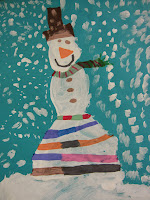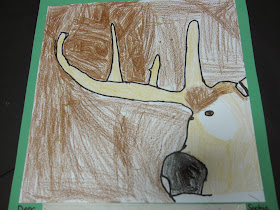Second grade students learned about Henri Matisse. They discovered, through the book, "Drawing with Scissors" by Keesia Johnson and Jane O'Conner, that Matisse could draw and paint very realistically, but he chose not to. First he tried a style of painting calling Fauvism. When he got older, he got sick and couldn't stand for long periods to paint, so instead he "drew with scissors" while sitting or laying down. They learned to differentiate between organic and geometric shapes. Students learned that Matisse favored organic shapes. Students created a collaborative mobile using organic shapes.























